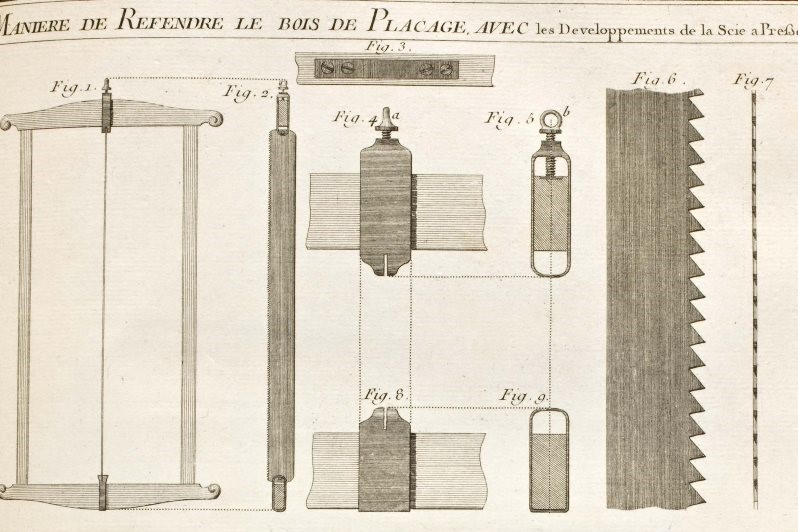
Sources for Resaw Frame Saw Parts
I’ve received inquiries from multiple readers regarding my version of the Roubo frame saw. Specifically where I got the parts from and how they could make their own. Unfortunately, my source is not available to the public. The blade and metal parts of my saw (and the poplar end handles) were made by a group of friends who made a bunch of them for themselves as a group tool making project about 10 years ago. My parts were some extras that they graciously gifted to me as a thank you for helping them out in their booth at a Woodworking in America conference. The long stretchers were my own making.
However, that doesn’t mean that there’s no hope for your own project. Luckily, the hand resawing craze caught on a number of years ago thanks to several online personalities who built these saws, demonstrated their effectiveness, and even worked with contemporary saw makers, who saw that there was a niche market for these tools, to introduce commercial versions. So these days, you can purchase resaw parts and even complete saws from Bad Axe Tool Works and Blackburn Tools. While there is still some expense involved in building these “kits”, the cost is still less than a comparable bandsaw.

However, if you have a burning desire go all DIY rather than starting from a kit, you can do that as well. Roubo more or less tells you how to make this saw. If you have access to an original (or online) volume of his works, and you can read 18th century French, you should have no trouble deciphering all of the details you need to reproduce this tool. If, however, you are like me and can’t understand a word of French unless it has the words “fries” or “toast” attached, you can find these details in an English translation of the original published by Lost Art Press (by the way, I highly recommend both LAP translations of Roubo if you have an interest in pre-industrial woodworking).
There are a few other plans around online for different resawing frame saws that you may find as well. Some of them are good for reference (offering some alternative hardware options if you don’t want to purchase big, rectangular steel tubing). I will, however, offer a word of caution regarding some of these other plans. Many of them suggest using bandsaw blade stock for the blade. While this may seem like an easy way to approach the problem of finding a 4′ long saw blade, the bandsaw blade stock has a few drawbacks that really make it a poor choice. Based upon my personal experience building and using several saws made from bandsaw blades, I do not recommend it as a solution.
First, I think the bandsaw blade is much too narrow. Unless you find a place that sells blades for bandsaw mills, the widest bandsaw blade you’re likely to find commonly available is around 1″ to 1½” wide. I find a blade this narrow to be a major disadvantage for resawing wide boards by hand. If you think about a regular rip saw, the blade is about 6-8″ wide. This wide blade, along with proper minimal set, helps to keep the blade from twisting in the kerf and throwing the cut off. The wide frame of the resaw is capable of tremendous torque on the blade, so the wider the blade you can get, the better. The blade in my saw is 2″ wide. I’d consider that bare minimum for resawing by hand, and would actually prefer a blade about 4-5″ wide.
Even if you do find a nice, wide bandsaw blade, bandsaw blades have too much set. The heavy set on bandsaw blades may be fine for a machine running a true straight line with guide bearings, but for hand sawing, to much set makes sawing straight a nightmare. The saw blade tends to rattle around in its own kerf leading to anything but a straight line. The motion of hand sawing is not a perfectly controlled straight line and is not guided by ball bearings. Heavily set saws don’t help.
Finally, the teeth on bandsaw blades are shaped all wrong for hand work. The aggressive hook tooth pattern may be fine for a machine that controls the tracking and the force, but when sawing by hand, this pattern requires too much force. Forcing the saw leads to drifting cuts. The big, positively raked teeth of a bandsaw blade are simply too aggressive for sawing by hand.
So if your desire is to make one of these saws completely DIY (including the blade), I’d recommend purchasing a 3-5″ wide length of 0.042″ thick 1095 spring steel (try McMaster Carr) and using a saw sharpening file (about an 11″ slim taper should do) to file in your own teeth at the proper geometry for hand resawing – about 3 points per inch with 5 degrees of rake and no fleam. Try to get the steel in the same thickness as your standard rip saw, so that you can start the cut accurately with the rip saw, and then switch to the frame saw for the remainder of the cut.
Happy resawing!

2 Comments
Hi Bob. I got my kit from Blackburn Tools a few years ago and made my frame parts from poplar, Isaac’s plans were simple to follow and the saw works well. I got the 3″ x 36″ blade. It took a bit of practice, but after a while my cuts got straighter and the cut got cleaner.
Thank you Bob for taking the time to write about this . Thank you also Matt for Blackburn:)
Cheers